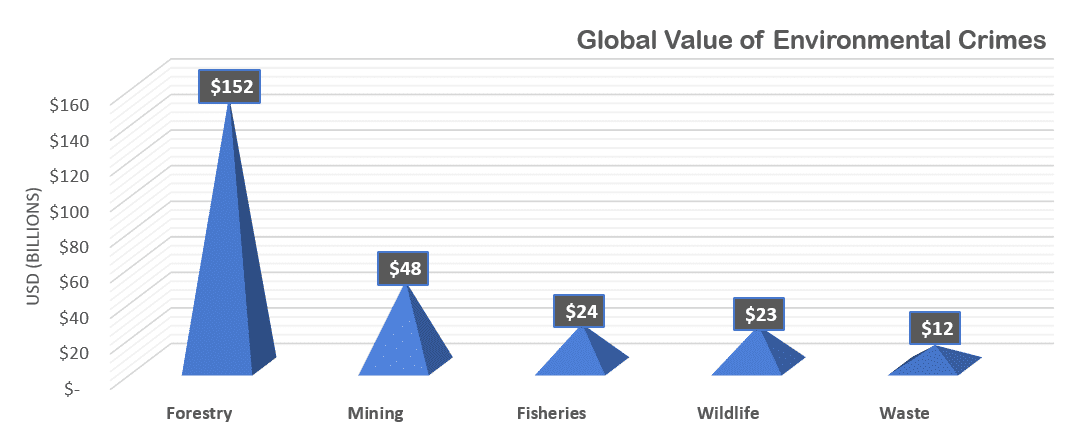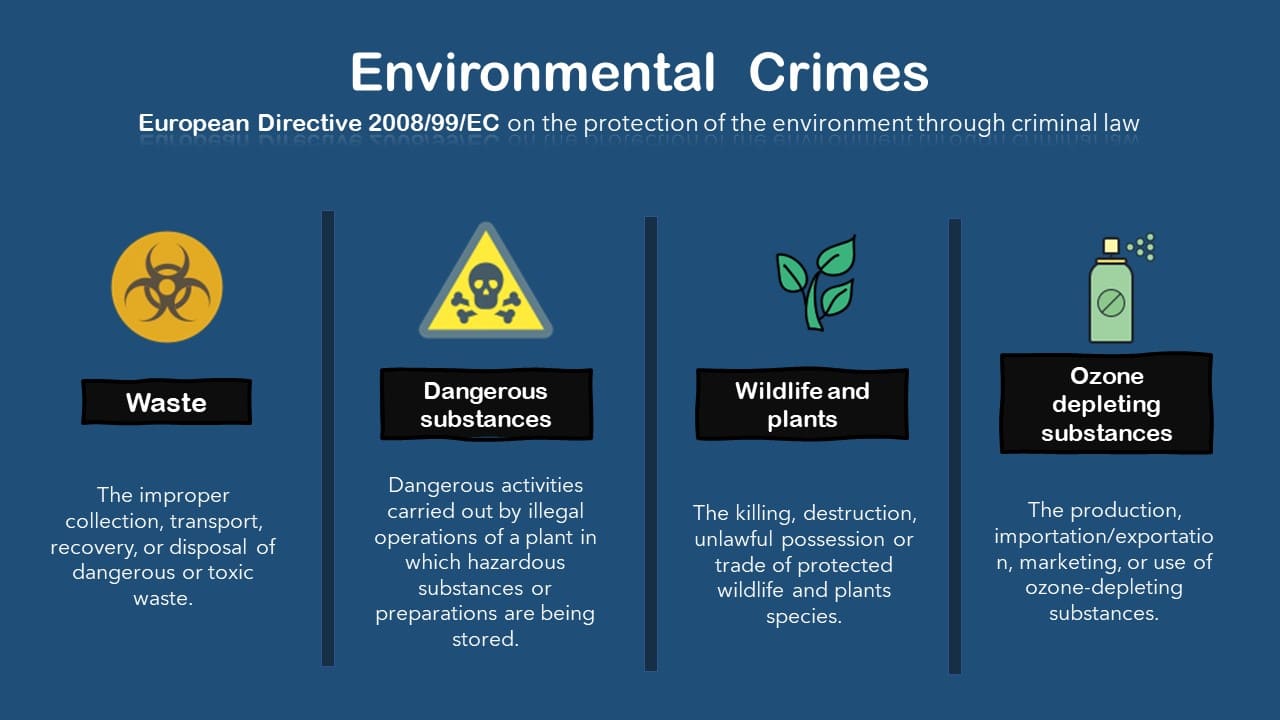Environmental crimes, also known as green crimes, are a true global industry which Interpol estimates to be worth roughly $250 billion a year. Often perceived as “victimless,” as it involves no humans, and with more focus on the gains than on the damages that it causes, it is not viewed as a priority in many countries. This has led to numerous lax and insufficient laws to tackle the problem.
The blind eye turned toward these types of crimes has created a snowball effect that is complicated to stop. It is estimated that green crimes grow between 5% to 7% yearly, which is approximately 2 to 3 times the rate of the global economy.
What constitutes an environmental crime?
There are no international agreements that give a clear definition of what constitutes an environmental crime.In the United States, title 5, ENRD, section 5-11.000 of the Justice Manual, divides environmental crimes into four categories: pollution crimes, wildlife crimes, animal welfare crimes, and worker safety crimes.
What is the driving force behind environmental crimes?
The second factor is the modest recognition of said breaches and the punishments correlated to them. The fact that there is little awareness towards such crimes in many countries facilitates and encourages criminals to continue carrying out their destructive schemes. The risks are also considered to be lower as penalties in certain countries are much inferior than those of illegal drugs or human trafficking.

Navigating the Regulatory Maze: Where Compliance Meets Simplicity.
Embark on a journey beyond convoluted information, where compliance transforms into a strategic advantage. Click register to access our premium articles and stay steps ahead in the game. 🚀
The remainder of this article is exclusively available to our registered users!
Sign up for free to access:
- 🚀 Premium articles: Get in-depth insights and expert analyses on trending topics.
- 💡 First-rate content: Navigate complex frameworks with clarity using tips and regulatory guidelines.
- 🌟 Expert insights: Unlock a trove of expert insights, keeping you steps ahead of ever-changing regulations.
Don’t stay in the dark—embrace clarity and confidence on your compliance journey ☀️ Subscribe now and get immediate access to all our premium content for free! 🎁








Such on interesting post, Thank you for compiling the financial legislation related to environmental crime.